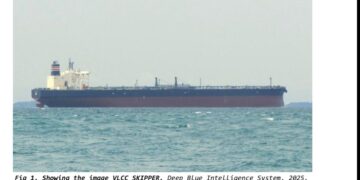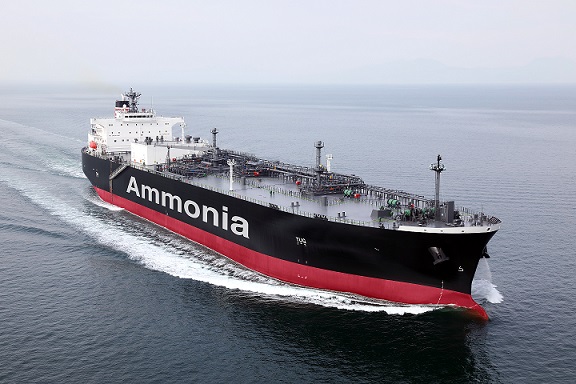Industry heavyweights Lloyd’s Register’s Decarbonization Hub, Maersk, MAN Energy Solutions, Mitsubishi Heavy Industries, NYK Line, Total and the Mærsk Mc-Kinney Møller Center for Zero Carbon Shipping are embarking on a new project with the aim of providing guidelines on the safe use of ammonia as a fuel for shipping.
Ammonia as a fuel has emerged as one of the likely front-runners in the shipping industry’s decarbonization path.
Green ammonia can be produced from renewable power by electrolysis of H2O, ultimately making it a zero carbon fuel.
Nevertheless, there are major safety issues that need to be tackled when discussing ammonia as potential marine fuel of the future, the most important one being its high toxicity.
The use of ammonia can be seen as a major safety hazard for people because of the health dangers caused by exposure through inhalation or skin contact.
Hence the most important aspect to developing an ammonia-powered engine or an ammonia-fuelled ship will be making sure potential ammonia releases are prevented and safe and quick handling of potential leakages is ensured.
Therefore, it is critical to address these safety issues in order to mitigate risks for both people, assets, and the environment.
As a result, there is a need to develop a mature and detailed understanding of risk and safety concerns, which will be assessed through a Quantitative Risk Assessment methodology in phase one of the project.
The goal is to develop best practices for safeguards in design and arrangements when using ammonia as a shipping fuel.
The project will also determine the risk of fatality from unintended releases of ammonia, as well as the risk contribution of key equipment and spaces dedicated to its storage.
Funded by the participating partners, the project will be managed by the Mærsk Mc-Kinney Møller Center for Zero Carbon Shipping and is expected to run throughout 2021
“In the eagerness to decarbonize the shipping sector proper risk management is critical and safety must not become an afterthought. This project will provide matured understanding of safety risk enabling industry guidance towards future safeguard design and adequate operational guidelines,” says Claus Winter Graugaard, Head of Onboard Vessel Solutions, the Mærsk Mc-Kinney Møller Center.
Besides the technical challenges, ammonia’s safety challenge is a main outstanding hurdle to solve for it to become a viable ship fuel, according to Ole Graa Jakobsen, Head of Fleet Technology at A. P. Moller – Maersk
“Through the accumulative experience in ammonia carriers and ammonia production plants in MHI Group and by combining the knowledge and efforts with the great project partners, we are quite delighted to provide what we call ‘Smell free concept’,” says Tomoo Kuzu, Senior Executive Vice President, Mitsubishi Heavy Industries Marine Machinery & Equipment Co.
Industry-wide collaboration projects like these are believed to be the backbone of applied research needed to ensure that laboratory research is successfully matured to scalable solutions matching the needs of the industry.
Ultimately, outcomes and concrete results of R&D and demonstration projects are targeted at giving more confidence to the market for the commercialization of these solutions.
Credit: World Maritime News






























































